Motivation
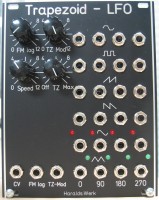
This is my Trapezoid quadrature through zero LFO. Derived from my Trapezoid quadrature through zero VCO. Still using the trapezoid VCO core designed by Don Tillman (used with permission). I found the original article and schematic about the Trapezoid VCO on Don Tillman's site (Link to original article from 19 July 2003). The article consists off three parts with the core implementation in part 2. I kept the basic idea and changed nearly everything else. I use an other exponentiator scheme and temperature stabilization. Another reference voltage device is used. And quadrature square outputs are implemented. As well as the additional waveforms triangle, sine, ramp up and ramp down. For the LFO I made a few changes. I removed the pulse output and added the missing ramp up and ram down outputs for 180deg and 270deg. Everything else is kept the same as in my Quadrature VCO. This LFO runs from zero Hertz way up in the audio range.
Specs and features
- Runs from zero Hertz to audio range.
- Trapezoid quadrature output
- Square quadrature output
- Triangle quadrature output
- Sine quadrature output
- Ramp up quadrature output
- Ramp down quadrature output
- Through zero modulation
- V/Oct, FM log and trough zero CV input
- Temperature compensated
- Runs on +/-15V and +/-12V
- Power consumption around 110mA each rail
Implementation
Schematic
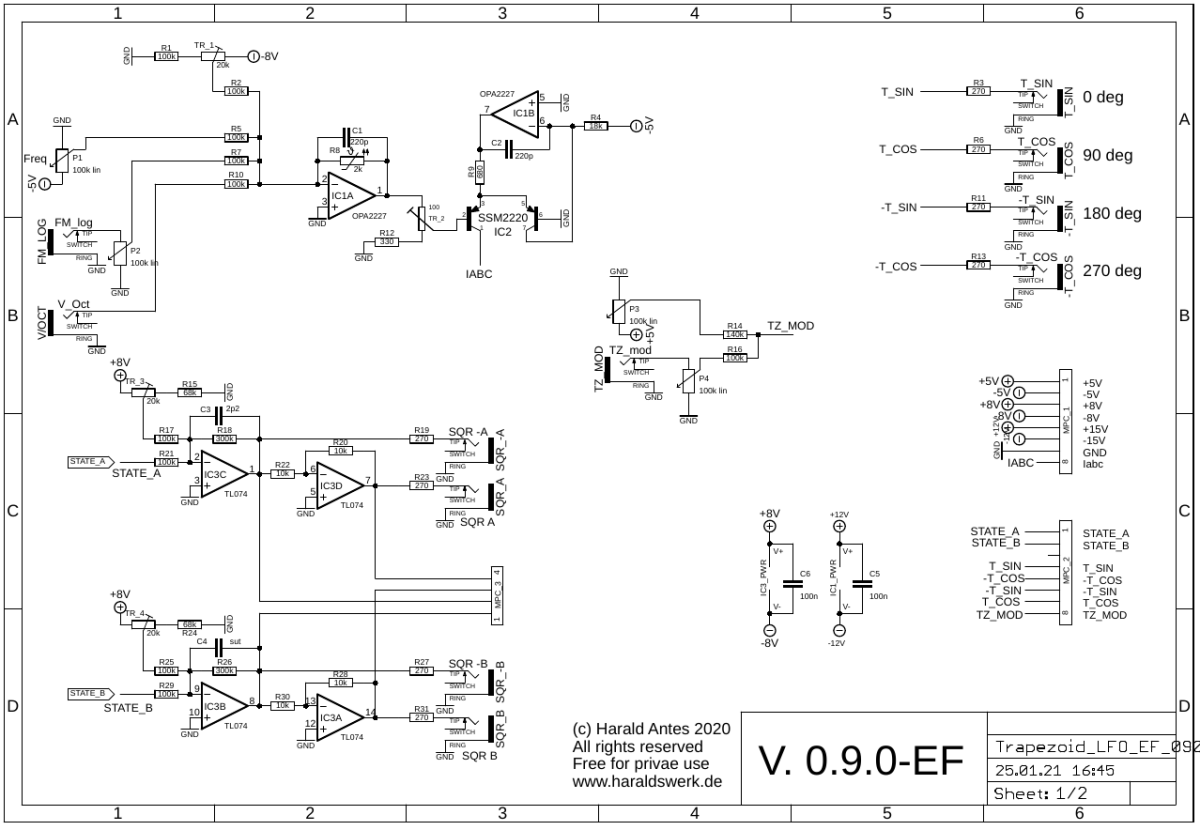
Trapezoid quadrature LFO schematic: Control board 01
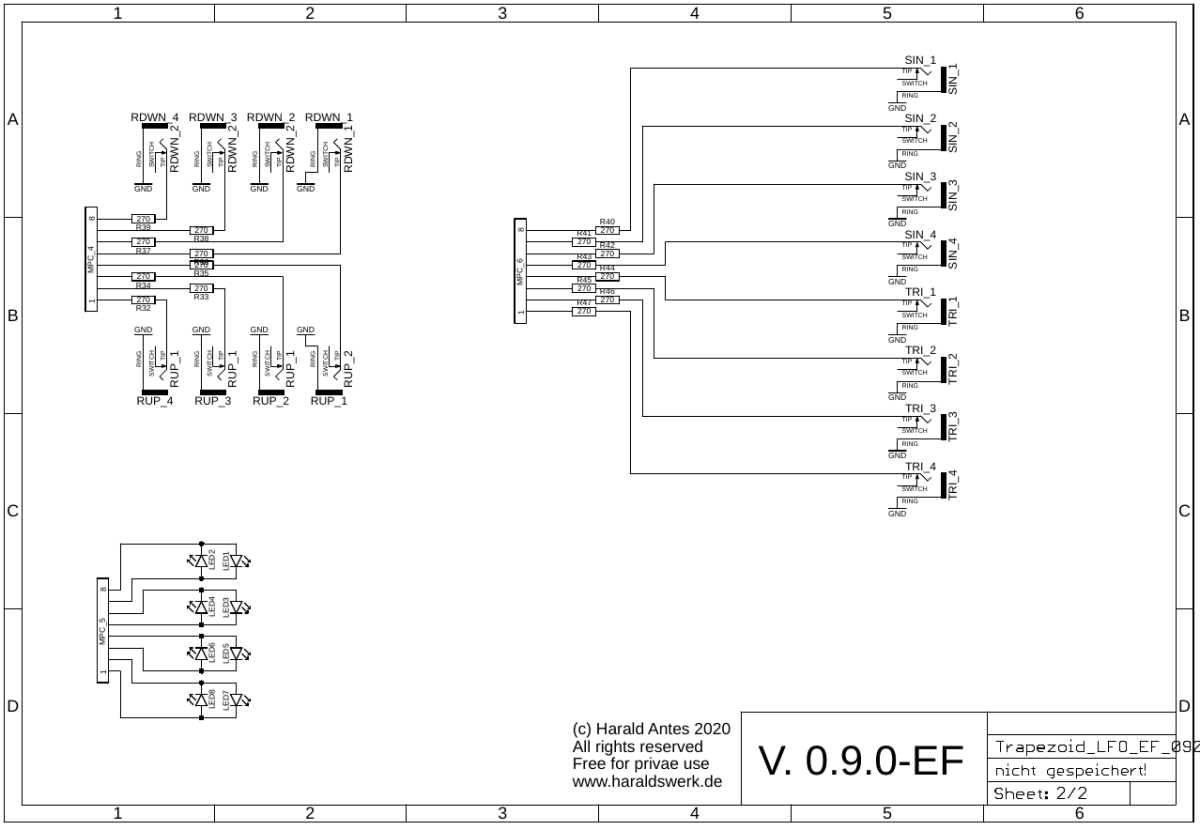
Trapezoid quadrature LFO schematic: Control board 02
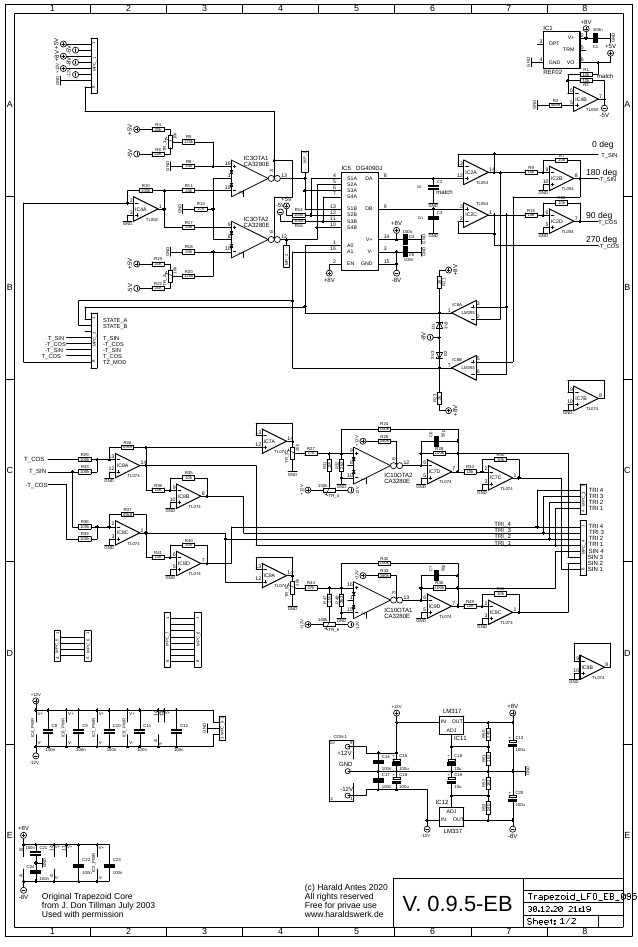
Trapezoid quadrature LFO schematic: Main board 1/1
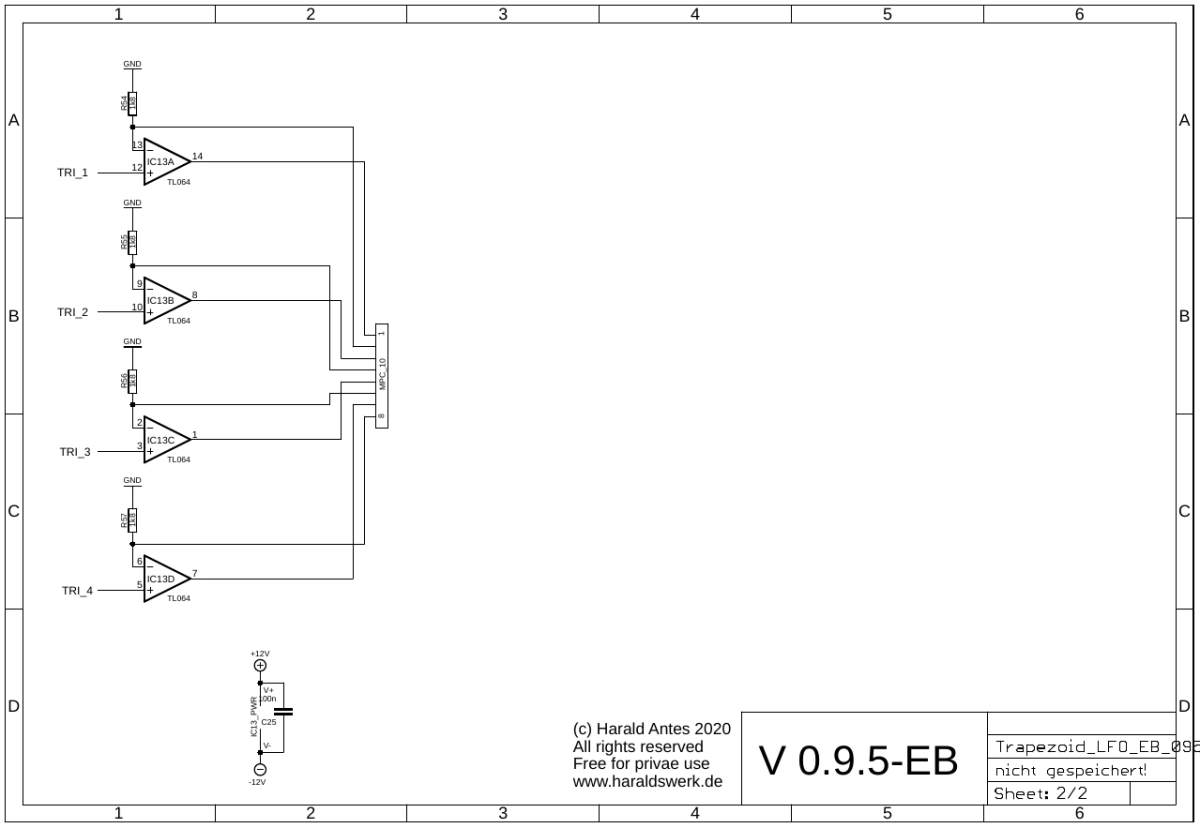
Trapezoid quadrature LFO schematic: Main board 1/2
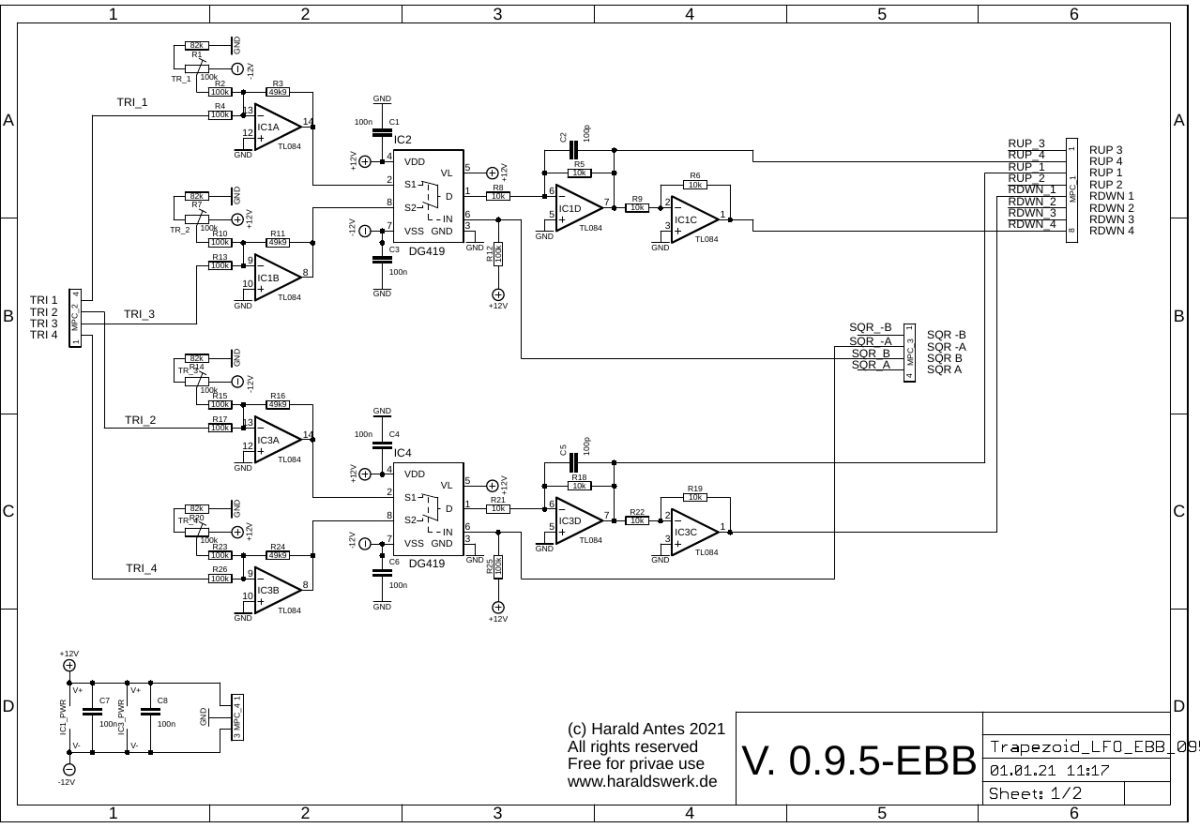
Trapezoid quadrature LFO schematic: Main board 2/1
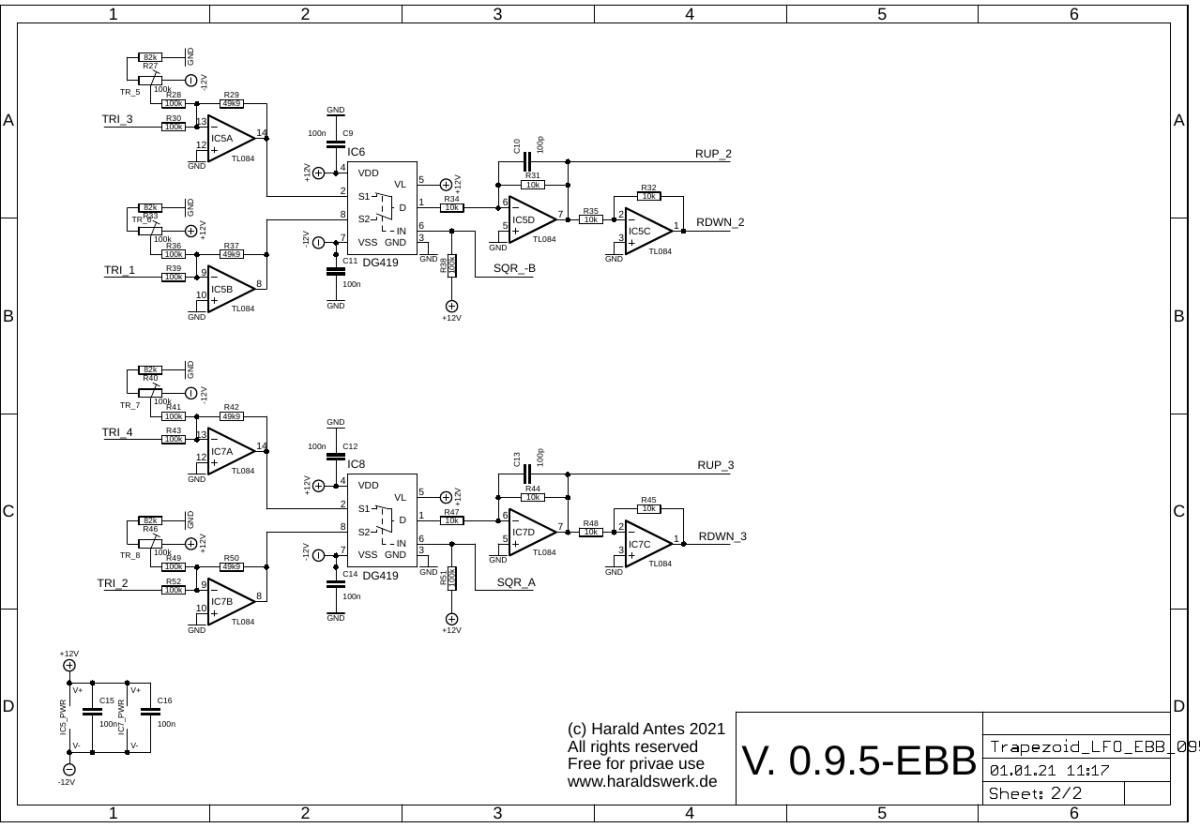
Trapezoid quadrature LFO schematic: Main board 2/2
Description:
J. Donald Tillman did an excellent job describing the core of his Trapezoid VCO. Please refer to the original article as linked above. Don Tillman gave me the advice to use only two capacitors in the core. The exponentiator I use is a well known and a classical design. You can find many description of it out there. The rest is straight forward.
Trapezoid quadrature LFO screenshot: Trapezoid quadrature waveforms
The quadrature and square waveforms are offset on the scope for better visibility
Trapezoid quadrature LFO screenshot: Square quadrature waveforms
Trapezoid quadrature LFO screenshot: Saw quadrature ramp up
Trapezoid quadrature LFO screenshot: Saw quadrature ramp down
Trapezoid quadrature LFO screenshot: Triangle quadrature waveforms
Trapezoid quadrature LFO screenshot: Sine quadrature waveforms
Top
Calibration
- First make a gross test. You should have a signal at every output, pots and inputs reacting.
- Initial frequency
- Set P3 (TZ) to min (off).
- Set P1 speed to max.
- Adjust TR_1 (control PCB) to 10Hz.
- OTA offset voltage
- Remove DG409
- Ground the CV input
- Set P3 (TZ) to max.
- Set P1 speed to center.
- Set P2 (FM log) to zero
- Set P4 (TZ mod) to zero
- Measure the DC offset at MP_1 on the backside (pin 13 of the IC3OTA1). Adjust trimmer TR1 (main PCB) to zero volt.
- Measure the DC offset at MP_2 on the backside (pin 12 of the IC3OTA2). Adjust trimmer TR2 (main PCB) to zero volt.
- Don't forget to put the DG409 back in
- V/Oct adjust
- Low frequency: Set the frequency to about 10Hz
- Apply +1V to the CV input (Use precision voltage source or keyboard). The frequency should double
- Adjust Trimmer TR_2 (control PCB) to until it works.
- A more elaborate procedure is found here: NGF: VCO Core two
- Sine adjust
- Connect an oscilloscope to the 0deg (90deg) sine output.
- Adjust TR_3 (TR_5) on the main PCB 1 until the triangle rounds nicely to a sine. TR_4 (TR_6) adjusts the DC offset.
- Start with TR_3 (TR_5) and then adjust TR_4 (TR_6).
- Those adjustments are not independent. Go back and forth until you are satisfied.
- Ramp adjust
- Connect an oscilloscope to the 0deg (90deg, 180deg, 270deg) ramp output.
- Adjust TR_1 (TR_3, TR_5, TR_7) and TR_2 (TR_4, TR_6, TR_8,) (main PCB 2) until the ramp looks like a straight line
- Square offset
- Connect an oscilloscope to the 0deg (90deg) square output.
- Adjust TR_3 (TR_4) (control PCB) for zero offset.
Building hints
- R8 (2k tempco 3300ppm) is mounted beneath the SSM2220
- Match C2 and C3 (Main PCB)
Special parts
- The SSM2220 could be replaced with two (hand) matched transistors
- The OTA CA3280 could be replaced with the AS3280 (not tested though).
Download
Trapezoid quadrature LFO control board documentation downloadTrapezoid quadrature LFO control board Gerber files download
Trapezoid quadrature LFO main board 01 documentation download
Trapezoid quadrature LFO main board 01 Gerber files download
Trapezoid quadrature LFO main board 02 documentation download
Trapezoid quadrature LFO main board 02 Gerber files download
Trapezoid quadrature LFO *.fpd file